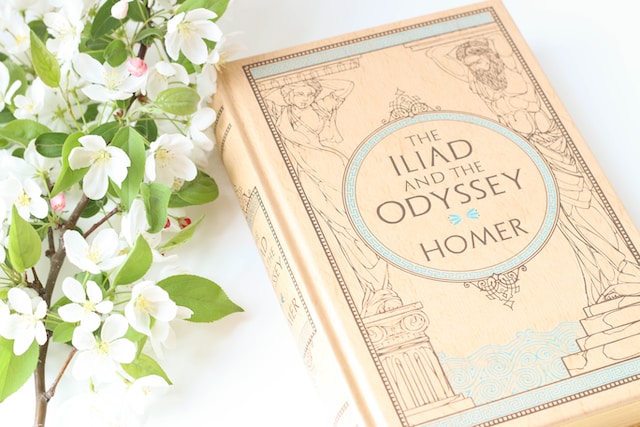Modernism in literature is characterized by a focus on individual consciousness and subjective experience, experimentation with form and language, and a rejection of traditional values and beliefs. Postmodernism, on the other hand, emphasizes the role of language and representation in constructing reality, challenges the notion of a stable and objective truth, and often employs irony and self-reflexivity.
What is Modernism in literature?
Modernism in literature was a movement that began in the late 19th century and lasted until the mid-20th century. It was a response to the Industrial Revolution and the increasing commercialization of culture. Modernists sought to change the way literature was written and read. They believed that literature should be expressive and accessible to as many people as possible. They also believed that literature should be experimental and expressive of the individual author’s vision.
What is Postmodernism in literature?
Postmodernism in literature is a reaction against the traditional rules and conventions of storytelling. In postmodernist novels, characters and events are often deconstructed and fragmented, making it difficult for readers to follow a linear plot. This can be seen as a rejection of the author’s control over the story, and an attempt to engage the reader in a more active and participatory way. Postmodernism is also characterized by a focus on language and communication, rather than on plot or character. In many ways, postmodernism is about destabilizing our notions of reality, and forcing us to question everything we take for granted.
Modernism and Postmodernism in literature – Key differences
Modernism and postmodernism are two major literary movements that emerged in the 20th century. While both movements are characterized by experimentation with form and language, they differ in their approach to storytelling and their relationship with society and culture.
Modernism emerged in the late 19th and early 20th century and is characterized by a focus on individual consciousness and subjective experience. Modernist writers often used fragmented narrative structures, stream-of-consciousness techniques, and multiple perspectives to represent the inner thoughts and emotions of their characters. They also experimented with form and language, often rejecting traditional narrative conventions and exploring new modes of expression. Modernist writers were often concerned with the changing social and cultural landscape of the early 20th century and sought to represent this through their writing.
Postmodernism, on the other hand, emerged in the mid-20th century and is characterized by a rejection of modernist ideals and a questioning of the notion of a stable and objective truth. Postmodernist writers often employ irony, parody, and self-reflexivity as narrative techniques and often blur the boundaries between high and low culture. They also challenge the distinction between fiction and reality and question the idea of authorial intention. Postmodernism often emphasizes the role of language and representation in constructing reality, and as such, postmodernist writers often employ pastiche and intertextuality to reflect the fragmented nature of contemporary society and culture.
While both modernism and postmodernism emphasize experimentation with form and language, modernism focuses on individual consciousness and subjective experience, while postmodernism questions the notion of a stable and objective truth and emphasizes the role of language and representation in constructing reality.
Examples of Modernist literature
(Photo by Girl with red hat on Unsplash )

There are many examples of modernist literature from the early 20th century. Here are some of the most well-known works:
- “Ulysses” by James Joyce (1922) – This novel is often considered the quintessential modernist work, as it uses stream-of-consciousness narration, multiple perspectives, and experimental language to depict a day in the life of Leopold Bloom in Dublin.
- “The Waste Land” by T.S. Eliot (1922) – This poem is known for its fragmented structure, allusions to multiple literary and cultural works, and its depiction of a post-World War I world that is devoid of spiritual and cultural meaning.
- “Mrs. Dalloway” by Virginia Woolf (1925) – This novel uses stream-of-consciousness narration to explore the inner lives of its characters, as they prepare for a party in post-World War I London.
- “To the Lighthouse” by Virginia Woolf (1927) – This novel also uses stream-of-consciousness narration to depict the inner lives of its characters, as they spend a summer in a house on the Isle of Skye.
- “The Great Gatsby” by F. Scott Fitzgerald (1925) – This novel is known for its exploration of the American Dream and its critique of the excesses of the Jazz Age.
These books and poems represent the experimentation with form and language that was characteristic of modernist literature.
Examples of Postmodernist literature
(Poto by Brett Jordan on Flickr)

Postmodernist literature emerged in the mid-20th century and is characterized by a rejection of modernist ideals and a questioning of the notion of a stable and objective truth. Here are some examples of postmodernist literature:
- “If on a winter’s night a traveler” by Italo Calvino (1979) – This novel uses a self-reflexive and non-linear narrative structure to explore the relationship between the reader, the author, and the act of reading.
- “Infinite Jest” by David Foster Wallace (1996) – This novel is known for its complex narrative structure, use of footnotes, and exploration of addiction, entertainment, and American society.
- “Beloved” by Toni Morrison (1987) – This novel uses a non-linear narrative structure and magical realism to explore the legacy of slavery and the African American experience.
- “Gravity’s Rainbow” by Thomas Pynchon (1973) – This novel is known for its complex narrative structure, use of science and technology, and exploration of the human condition in the aftermath of World War II.
- “White Noise” by Don DeLillo (1985) – This novel uses satire and humor to critique consumer culture and the media, and explores the anxiety and uncertainty of modern life.
These works, along with many others from the second half of the 20th century, represent the questioning of traditional narrative conventions and exploration of the role of language and representation in constructing reality that is characteristic of postmodernist literature.
What are the common characteristics between modernism and postmodernism?
While modernism and postmodernism are distinct literary movements with different characteristics, there are some commonalities between them. Here are some of the shared features:
- Experimentation with form and language: Both modernist and postmodernist writers often rejected traditional narrative conventions and explored new modes of expression, such as stream-of-consciousness narration, fragmentation, and self-reflexivity.
- Emphasis on subjectivity: Both movements were interested in exploring the inner lives of their characters and the subjective experience of reality, often using techniques such as multiple perspectives and non-linear narratives.
- Critique of traditional institutions: Modernist and postmodernist writers were often critical of established institutions, such as religion, politics, and culture, and sought to explore their flaws and limitations.
- Exploration of social and cultural change: Both movements were interested in representing the changing social and cultural landscape of their times, often reflecting the fragmentation, uncertainty, and disillusionment of the modern world.
- Focus on the individual: Both modernist and postmodernist literature often placed a high value on the individual and their unique experiences, perspectives, and identities.
While modernism and postmodernism are different literary movements with distinct characteristics, they share a concern with experimentation, subjectivity, critique, and social and cultural change.
What are the characteristics of postmodernism?
Postmodernism is a broad cultural and intellectual movement that emerged in the mid-20th century and influenced literature, art, architecture, philosophy, and other fields. While postmodernism is difficult to define precisely, it is often characterized by the following features:
- Rejection of objective truth: Postmodernists reject the notion of a stable, objective truth that can be discovered through reason or empirical investigation. Instead, they emphasize the subjectivity of human experience and the importance of multiple perspectives.
- Fragmentation and deconstruction: Postmodernists often use fragmentation, collage, and deconstruction to subvert traditional narratives and structures, highlighting the contingency and complexity of meaning.
- Self-reflexivity and intertextuality: Postmodernists often draw attention to the processes of representation and interpretation, and explore the relationships between texts, cultures, and individuals.
- Irony and parody: Postmodernists often use irony and parody to critique established ideas and institutions, and to question the boundaries between high and low culture.
- Hybridity and plurality: Postmodernists often celebrate hybridity, diversity, and difference, and challenge the idea of a universal human experience.
- Playfulness and experimentation: Postmodernists often experiment with form, language, and style, and celebrate playfulness, creativity, and imagination.
Postmodernism is characterized by a rejection of the certainties and stability of modernist thought, and an emphasis on fragmentation, contingency, and subjectivity.
What are the characteristics of modernism?
Modernism is a cultural and artistic movement that emerged in the early 20th century and influenced literature, art, architecture, music, and other fields. While modernism is difficult to define precisely, it is often characterized by the following features:
- Experimentation with form and language: Modernist writers often rejected traditional narrative conventions and explored new modes of expression, such as stream-of-consciousness narration, fragmentation, and non-linear narratives.
- Focus on the individual and the inner self: Modernist writers often emphasized the subjective experience of reality and the inner lives of their characters, exploring themes such as alienation, isolation, and identity.
- Critique of traditional institutions and values: Modernist writers often challenged established institutions and values, such as religion, politics, and culture, and sought to explore their flaws and limitations.
- Celebration of the new and the modern: Modernist writers often celebrated the technological and cultural innovations of their time, embracing the dynamism and energy of modern life.
- Emphasis on the visual and sensory: Modernist writers often used vivid imagery and sensory details to create a powerful and immersive reading experience.
- Ambiguity and complexity: Modernist writers often created works that were open to multiple interpretations and that challenged readers to grapple with ambiguity and complexity.
Modernism is characterized by a concern with experimentation, subjectivity, critique, and celebration of the new and the modern.
Featured Image By – Kelly Brito on Unsplash









